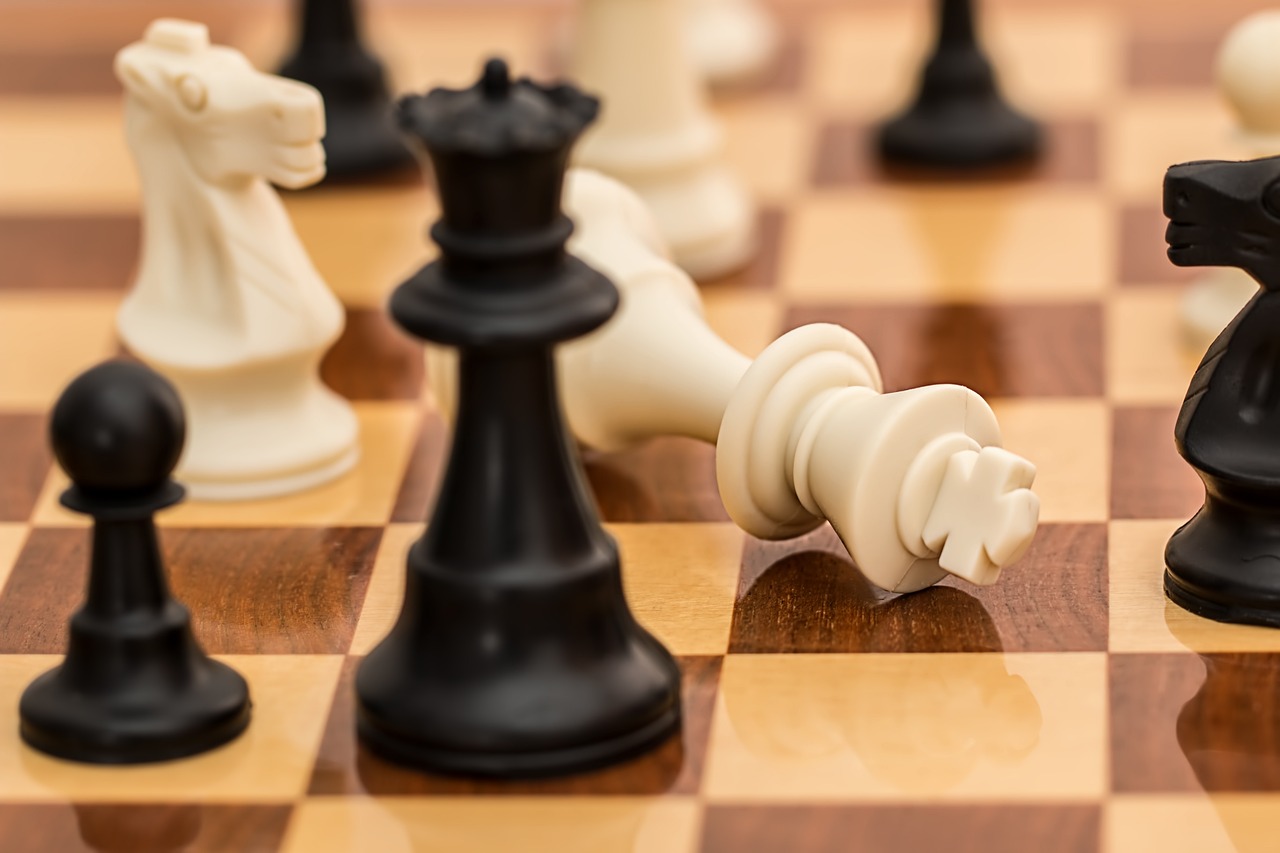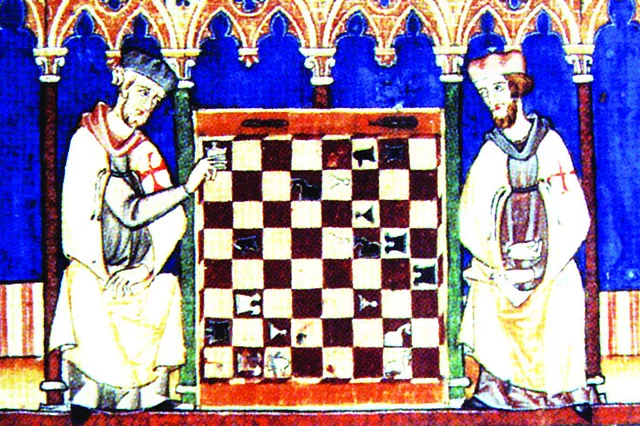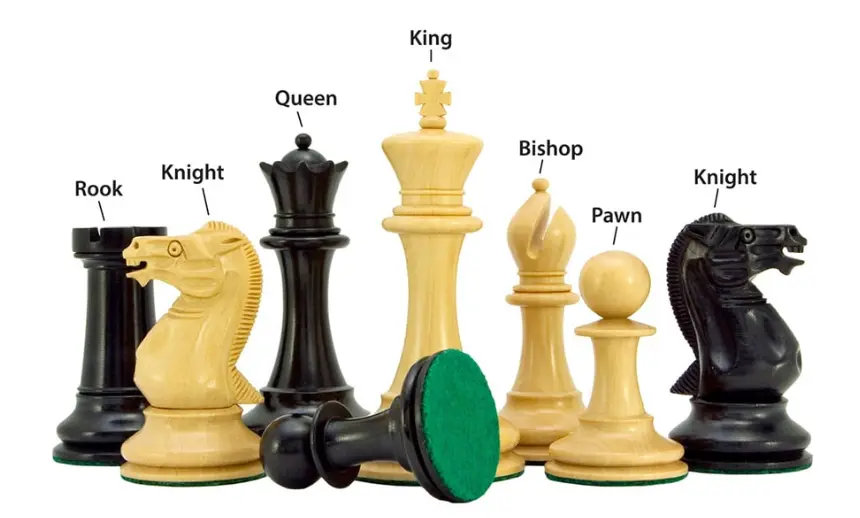
Long ago there was a wise man in a land. His name is Chisa. One day he discovered a new game; Named Chaturanga.
Chisa showed the game to King Shehram of that country. The king was impressed. He was looking for such a game of wits. So, giggling with happiness, he asked Chisa to ask for whatever he wanted as a reward.
In response, the intelligent Chisa said, ‘I am a very ordinary person. I am not greedy for nobility, mansions or gold coins. I just want to eat my fill with my family for the rest of my life. So Rajamshai, I am happy to give as much grain as this toy table has.’
Hearing this, the king was a little angry. He said, ‘That’s all! Are you trying to insult me?’
No, Rajamshai. I am not finished. Say first, you will fulfil your promise.’
The king roared, ‘Yes, of course.’
Then, in the first square of Chaturanga, give only one grain. The next square is twice as big as the first. Double the second in the third square…so please fill the whole 64 squares. If you give me this much, I will be fine.’
Thinking that the man was a fool, the king laughed a little. He thought, what is this?
 Those who have read this must be thinking like the king, what is this? But hearing the whole thing may make your eyes roll up. Coming to that. There are several such stories that are almost legendary. A version of it is described in Persian poet Ferdowsi’s famous Shahnama. So, like Sohrab-Rustam, researchers are also sceptical about whether this story is true or a legend. However, many are sure that the origin of the story is in India. Because, according to the evidence, Chaturanga or chess originated in the Indian subcontinent. It’s widely believed that chess made its debut in India during the Gupta period around the 6th century AD, roughly 1,500 years ago. Then it was called Chaturanga (Sanskrit chatu means four and anga means part). At that time chess had four parts – elephants, horses, chariots and foot soldiers. Hence the name.
Those who have read this must be thinking like the king, what is this? But hearing the whole thing may make your eyes roll up. Coming to that. There are several such stories that are almost legendary. A version of it is described in Persian poet Ferdowsi’s famous Shahnama. So, like Sohrab-Rustam, researchers are also sceptical about whether this story is true or a legend. However, many are sure that the origin of the story is in India. Because, according to the evidence, Chaturanga or chess originated in the Indian subcontinent. It’s widely believed that chess made its debut in India during the Gupta period around the 6th century AD, roughly 1,500 years ago. Then it was called Chaturanga (Sanskrit chatu means four and anga means part). At that time chess had four parts – elephants, horses, chariots and foot soldiers. Hence the name.
It took a lot of time and countries to become modern chess from Chaturanga. Since its inception, it has been known as a game of wits. This game of 64 rooms requires a lot of intelligence and strategy. So Chaturanga was becoming quite popular in that era to test intelligence. Arabia and Persia (now Iran) had trade relations with India during that period. So it didn’t take long for Chaturanga to go to Persia by the hands of the merchants. There its new name is Shataranj. Around the same time the game moved from India to China. The Chinese named it Jiankui.
During the reign of the Persian king Saladin in the 12th century, European crusaders flocked to Arabia and Persia in the name of protecting Jerusalem. While staying there for a long time, they started importing many things from there to Europe. Thus Shataranja also migrated to Europe and became popular. Many people think that during the Muslim Moorish rule in Spain, Shataranja spread to Europe and Russia. Here too he gets the new name ‘Chess’, which is derived from the Old French ‘bop’ (meaning check). Originally the word chess comes from the Persian word shah (king). Not only the name, but many other aspects of the game have changed. It was here that bishops (also known as elephants or yards in India and Bangladesh) were added to chess under the influence of Christian Catholicism. Rani joined later.
Then chess game started spreading to the world through Europeans and chess became popular. Then in 1924, The Federation Internationale des Chess (FIDE) was formed. They set and regulate the international rules of chess. This organization is the organizer of international chess competitions. FIDE recognizes players as International Masters and Grandmasters based on skill. The players who are the best in the competition are the Grandmasters. The use of computers in the game of chess in the last century has made it more popular and a topic of discussion. In 1996, international grandmaster Garry Kasparov played chess with a computer called Deep Blue. It is the first time that artificial intelligence and machines stand as opponents of humans. Kasparov won a chess match with Deep Blue in 1996 and the next year he lost against Deep Blue. This incident of loss to the machine caused discussion in the world.

Now back to King Shehram and Chisa. Let’s calculate exactly how many grains can be contained in 64 squares according to Cheesa’s conditions. According to the calculation, the amount of wheat or grain in the 64th square will be 263 (i.e. 63 to the power of 2). Because, in the first house there was a grain. 2 in the second, 4 in the third or 22 (2 to the power 2) in the fourth 8 or 23…so 263 in the 64th square (2 to the power 63).
So, the number of grains on the whole chess board will be 264-1. That is, after multiplying 2 64 times, subtract 1 from it. Because the number of grains in the first cell is 1. 2 in the second room. Then the total grains in the first and second houses will be 1 + 2 = 3 or 22 – 1, thus in the first to third house 1 + 2 + 4 = 7 or 23 – 1, in the first four houses 1 + 2 + 4 + 8 = 15 or 24- 1, thus 264 – 1 in the 1st to 64th house.
is found as, 264 – 1 = 18,446,744,073,709,551,615. That is, calculating in this way Chisa will have to give a total of 18,446,744,073,709,551,615 grains.
The interesting thing is, why King Shehram does not have this amount of grains in the whole world. At that time, the royal servants calculated a few days and told King Shehram, to give that amount of grain to Chisa, all the lands of the whole world should be cultivated. But in the end, the king could not keep his promise to Chisa… In another version of this story (not in the Shahnama), it is seen that Chisa was finally killed by the king to satisfy the anger of this inability.
Of course, even if he could give it, even counting it would be a big risk for Chisa. According to calculations, if Chisa counted only grains all day and night and if he could count one grain in a second, then on the first day he could count only 86 thousand 400 grains. In this way, if he just counts grains all day without eating and drinking, it would take him more than 58 thousand billion years (584,942,417,355 years). And if you want to keep this amount of grains, you have to build a dome 40 kilometres long, 40 kilometres wide and 300 meters high. According to calculations, if this crop is rice, its amount will be 461,168,602,000 metric tons. This pile of rice will be higher than the highest peak of the Himalayas, Mount Everest. This is 1000 times more than the rice produced in the whole world in 2010. Because, in the world of service, the production of rice has been 464,000,000 metric tons. So the comment is unnecessary.


